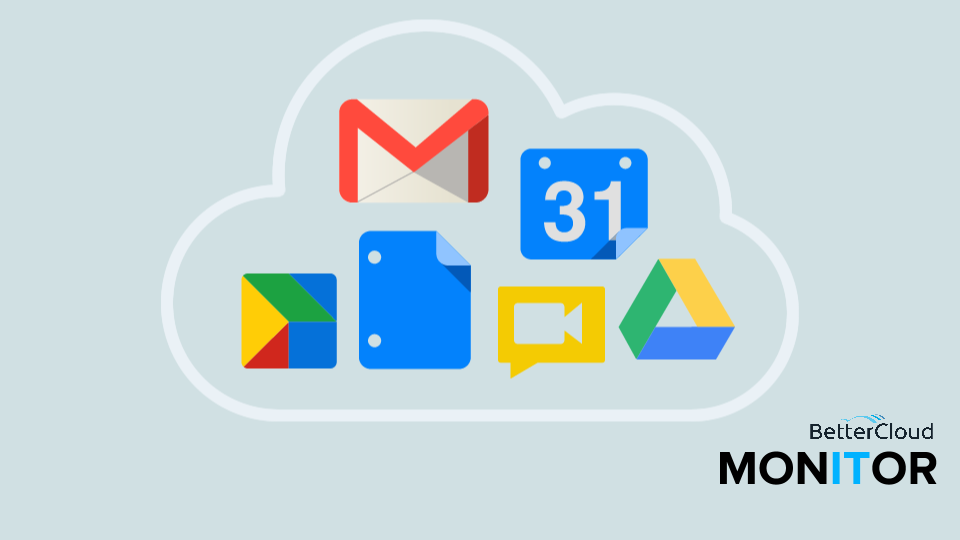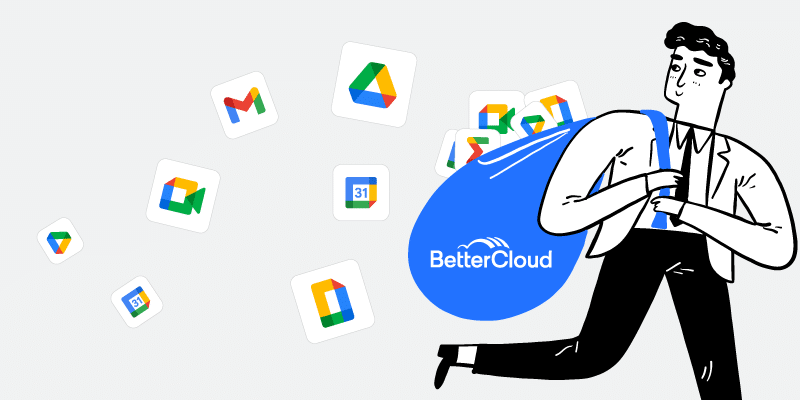6 Predictions for Cloud Office in 2015: Google for Work vs. Office 365
December 10, 2014
7 minute read

Interested in learning more about the battle between Google Apps and Office 365? Check out our Trends in Cloud IT series, especially Google Apps vs. Office 365.
2014 was a big year for both Google and Microsoft. Satya Nadella stepped in as Microsoft’s new CEO and set out to change the company’s image by focusing on cloud and mobile-first strategies. Google has continued to pour more resources into Google Apps, rebranding this year as Google for Work.
Cloud office is undoubtedly an exciting space and this is an exciting time to be a player in the ecosystem. Organizations are moving to the cloud and changing how they operate and because of it, employees are gaining efficiency, mobility and working together more collaboratively.
While Google and Microsoft both offer cloud messaging and collaboration tools, customers are faced with two very different options, and market forces have led these two competitors to evolve significantly at a rapid pace. But, they’re not done yet and we predict there are big things in store for 2015. Here are our predictions for Google, Microsoft and the cloud office space overall come the new year:
1. The Rise of the Thin Client Computer
A recent decision by the New York City Public Schools to go all in with Chromebooks shows the device’s continued popularity among EDUs, but we’re betting that in 2015, more enterprises will hop on the Chromebook bandwagon. We’ve actually continuously championed the idea that Google’s moves in the EDU space will have long-term ‘trickle down’ effects on the next generation of workers. And, while skeptics are right to say that thin client computers aren’t too useful without internet access, I haven’t been to too many places in the past few years that don’t offer wireless service.
Major updates announced at Google I/O this year that more deeply integrate Chrome OS and Android devices show Google’s continued commitment to Chrome OS. Utilizing a strategy of tight integration is one that has worked well for Google in the past (take Google for Work) and its likely to help increase Chromebook usage outside of the EDU space next year.
Microsoft
With stagnating sales of Windows 8 and Windows Phone 8, Microsoft made a bold move to compete head to head with Chromebooks in the low-end device market. Its HP Stream Laptop, which runs Windows 8, comes in at just $200. And along with the device, users receive a year-long subscription of Office 365 Personal at no additional cost. It looks like Microsoft hopes the new thin client devices will stymie some of the losses inflicted upon its Windows empire while pulling in new users to the Office 365 realm.
2. Intense Focus on Video Conferencing
For Google, Hangouts have long been a vital component of its Google+ social platform and beyond propping up Google+, they’ve become an integral business tool for companies operating on the Apps suite. In recent months, Google has made sweeping changes to make Hangouts available to organizations that choose not to enable Google+. Other recent updates like giving admins the ability to control Hangouts link sharing and tools for better collaboration in Hangouts make the video conferencing service all the more appealing. Continued efforts by Google to expand relationships with third-party developers building add-ons for Hangouts also enhance the products efficacy and broaden its adoption.
But, one main obstacle remains. For Hangouts to truly take off in 2015 and give more traditional players like GoToMeeting and WebEx a real scare, Google will need to once and for all remove the requirement that Hangout participants have Google accounts.
Microsoft
Microsoft too is getting serious about video conferencing and collaboration in the cloud. The company announced plans this November to replace legacy standby Lync with Skype for Business in the first half of 2015.
Skype for Business, which will be included in Office 365 when it’s released next year, capitalizes on the continued consumerization of IT and Nadella’s cloud and mobile-first strategies. Furthermore, the move is yet another in Microsoft’s efforts to consolidate its messaging services, something Google wrapped up last year with the introduction of Hangouts.
3. Innovation in the Inbox
We’ve long heard that “email is broken,” but companies that have set out to fix it have failed to gain traction. In an effort to “fix email” once and for all Google launched its new Inbox app this year. Inbox makes managing email easier than ever with features like Snooze, Reminders and Pinned messages. It’s all part of an effort by Google to get people out of their inboxes and back to managing more important tasks.
While the app is still invite-only, Google will likely make a bigger push next year to gain more active users and an article appearing in ComputerWorld last week signals the company might even release Inbox to Google Apps users in the months ahead. While on the surface, Inbox is merely an app set out to change your email experience, it could have bigger consequences for enterprise users – changing how people work, substantially increasing workplace efficiency and streamlining the way we communicate.
Microsoft
Microsoft also upgraded mail for its users this year, though with a considerably less radical product. The new Clutter feature uses machine learning to sort emails by level of importance, similar to Google’s “mark as important” feature. Clutter is proof that Microsoft is continuing to innovate in the inbox despite the long-held success of Outlook.
4. Continuation of ‘Mobile First’
It’s no secret that Google has historically favored its own Android platform over iOS (we’re still waiting for a native iOS Calendar app, Google). But, the company has made an effort to take a more platform agnostic and multi-platform approach. A notable shift was seen last year with the release of Drive and Hangouts applications for iOS and this year, Google released mobile versions of the Inbox app for Android and iOS simultaneously. For Apps customers, Google recently released a Devices and Activity Dashboard that should give IT admins more insight into the devices accessing their Google Apps domains.
Google has helped lay the foundation of our current mobile-first reality and as such will likely take the necessary, albeit painful steps to move towards a more cross-platform, OS agnostic approach in 2015, including app releases and updates across platforms as well as more sophisticated device monitoring tools.
Microsoft
As noted, Satya Nadella has emphasized Microsoft’s new commitment to a mobile-first strategy throughout 2014. And the company really delivered this November with the announcement that a comprehensive mobile version of Office would be available to iPhone, iPad and Android users for free.
A recent partnership with Dropbox also points to Microsoft’s focus on mobile. The integration allows users to access Dropbox directly from Office apps and even edit Office files from within the Dropbox app – all possible from Android and iOS devices.
In 2015, we’ll likely see more strategic partnerships and an even broader effort by Microsoft to make its popular web and desktop applications accessible on mobile – we might even see more powerful free versions of Word, Excel and PowerPoint released to Android and iOS users.
5. Storage Wars
Google vs. Microsoft
Cloud storage wars have been raging between Microsoft, Google and Amazon for the last year or so, but things have recently heated up between Microsoft and Google.
Just last month, Google announced that new Chromebooks buyers would receive a free terabyte of Google Drive storage for two years – today nearly a $240 value. The offer, which expires on January 1, 2015, is definitely a ploy to drum up sales before the end of the year, but can also be seen as a direct response to Microsoft’s recent offer of free storage for HP Stream 11 purchasers and a sign of things to come next year.
As storage prices continue to plummet, cloud storage is becoming more of a commodity, and less of a bargaining chip for potential purchasers. Despite Microsoft and Google giving away massive amounts of storage for free, the companies aren’t likely to incur losses. After all, if a single company houses all your data, you’re not likely to find a new provider – and to Google and Microsoft that kind of staying power is priceless.
6. Engaging the Channel
Perhaps taking a play from Microsoft, Google has focused on building out its partner channel over the last few years, partnering with players like Sprint, SoftBank and CDW and even creating a partner program for third-party developers like BetterCloud.
However, the biggest news of all came last week with an effort by Google to completely overhaul its partner program. The streamlined Google for Work and Education Partner Program includes three tracks – Sales, Services and Technology – and places more emphasis on the importance of the channel as Google gears up for a battle with Microsoft next year.
In 2015, look for Google to further build out its new partner program and establish relationships with some of the larger strategic and established partners – though born-in-the-cloud providers can rest assured that they’ll continue to serve as the foundation of Google’s channel while legacy players get accustomed to their new market. Actually, these cloud-first partners serve as an advantage to Google since they’ve been working with cloud technologies since the very beginning. In 2015, look for Google to help these partners take the next step in their businesses by providing more marketing assistance and offering more SKUs for these partners to market and sell.
Microsoft
Microsoft has long-relied on the channel to pedal its wares and despite some early setbacks, like a move to cut commissions for partners earlier this year, the company is back on board with its channel strategy – going as far as hosting a group of Google Apps resellers this fall.
Microsoft will have to work hard in 2015 though to evolve its channel and take advantage of the shift to the cloud, which will almost certainly involve cannibalizing existing revenue sources from sales of legacy Office and Exchange products. The company must simultaneously convince existing partners to build cloud practices, potentially forgoing short term profits to ensure long term viability, while also recruiting born-in-the-cloud partners to build out its channel.
Also next year, look for Microsoft to roll out a more significant ISV partner program to compete with the Google Apps Marketplace and Chrome Web Store.
Final Thoughts
Led by Nadella’s energy and vision, Microsoft has made tremendous strides with Office 365 over the last year. But, there’s still much work to be done. In 2015, Microsoft must face up to the reality that they’re not likely to own 80 – 90% of the enterprise messaging market again and that Google for Work has in fact captured the mindshare of IT leaders and become a significant player in the cloud office space.
I’m personally excited to see how this fierce competition drives overall innovation in the cloud office space in 2015. Google and Microsoft along with thousands of technology and channel partners have already transformed how millions of people around the world work and as more companies recognize that the cloud isn’t some far off notion, but an actual reality capable of transforming everyday business, we’ll see the true future of work take shape.






